ICT 40th Annual Symposium
Swindon, UK, 5th June 2014
The Institute of Circuit Technology celebrated its 40th Anniversary with an evening dinner attended by Fellows, Members and Associates old and new, welcomed by Technical Director Bill Wilkie and given a review of the history of the Institute and some of its notable events and personalities by Chairman Professor Martin Goosey. The following morning, delegates assembled in the Daniel Gooch Room of the Great Western Railway Museum of Steam in Swindon, Wiltshire, UK, for a diverse conference programme with topics encompassing management of human resources, market trends and developments in technology.
 Keynote presentation came from Kim Hayton of HaytonHeyes, offering motivational advice on energising business by harnessing the power of people, with emphasis on leadership and focus on the customer. She defined the attributes of a good leader: creating confidence, setting a vision and communicating effectively with team members, using the analogy of dating, engagement, marriage, family life, and the possibility of break-up and divorce, to illustrate and explain employment relationships, then detailed a management strategy for structuring a team and getting the most out of it. In conclusion, she reflected: “When it comes to your people, you get what you deserve!”
Keynote presentation came from Kim Hayton of HaytonHeyes, offering motivational advice on energising business by harnessing the power of people, with emphasis on leadership and focus on the customer. She defined the attributes of a good leader: creating confidence, setting a vision and communicating effectively with team members, using the analogy of dating, engagement, marriage, family life, and the possibility of break-up and divorce, to illustrate and explain employment relationships, then detailed a management strategy for structuring a team and getting the most out of it. In conclusion, she reflected: “When it comes to your people, you get what you deserve!”
Investigation of the phenomenon of conductive anodic filamentation (CAF) continues at the National Physical Laboratory, with the cooperation of a number of industrial partners. Dr Chris Hunt gave a progress report on studies of the 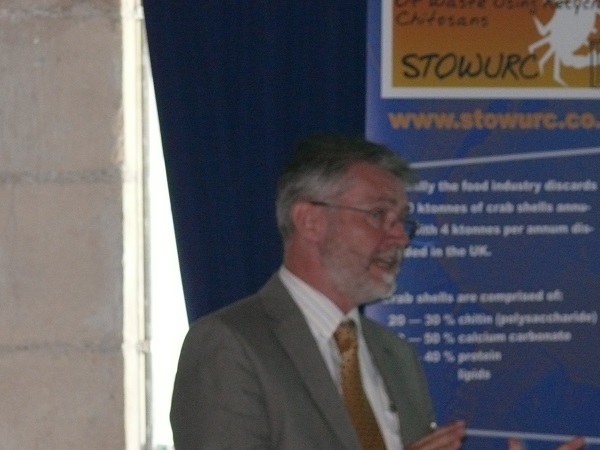 mechanism of CAF formation using simulated test vehicles, and introduced a new approach for detecting its presence. The established method was to use an optical microscope with backlighting, but since CAF was effectively an electrical short circuit there was on opportunity to measure resistance heating effects by thermography. Thermal cameras were now available with sensitivity better than 0.1 degree Kelvin, and a new technique known as lock-in thermography (LIT) was capable of detecting CAF at the sub-0.5 Megohm level, with the prospect that further development could extend the sensitivity into the Gigohm region. A complex rigid PCB was currently undergoing a range of tests.
mechanism of CAF formation using simulated test vehicles, and introduced a new approach for detecting its presence. The established method was to use an optical microscope with backlighting, but since CAF was effectively an electrical short circuit there was on opportunity to measure resistance heating effects by thermography. Thermal cameras were now available with sensitivity better than 0.1 degree Kelvin, and a new technique known as lock-in thermography (LIT) was capable of detecting CAF at the sub-0.5 Megohm level, with the prospect that further development could extend the sensitivity into the Gigohm region. A complex rigid PCB was currently undergoing a range of tests.
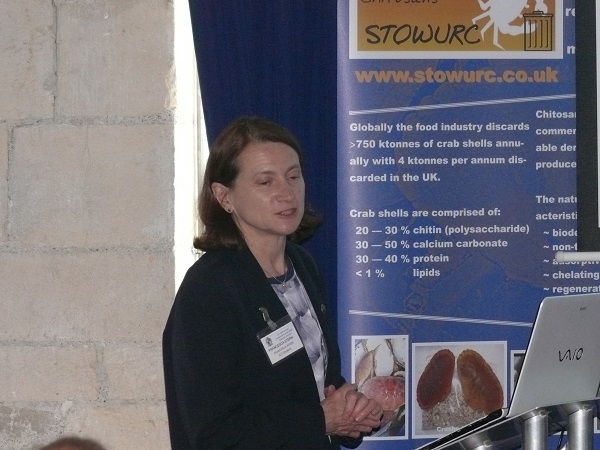 Market research specialist Francesca Stern gave an outlook on the UK PCB and electronics industry. Excluding components, world electronic equipment production in 2013 was $1.4 trillion. Compared with 2012, production had declined 2.4% in North America, 3.7% in Europe and 24% in Japan, but the overall figure remained the same. In 2012, European electronic equipment production was £136bn, of which UK was £10bn. Looking specifically at PCB production, the world overall was down 4% from $57.7bn in 2012 to $55.7bn in 2013. Forecasts for growth in PCB production (in Sterling) between 2013 and 2017 were from £35.7bn, of which Europe 5%, North America 5% and China 45%, to £40.7bn, of which Europe 4%. North America 4% and China 47%. UK PCB production in 2013 was £136m, of which the major sectors were military and aerospace together with industrial controls and instrumentation.
Market research specialist Francesca Stern gave an outlook on the UK PCB and electronics industry. Excluding components, world electronic equipment production in 2013 was $1.4 trillion. Compared with 2012, production had declined 2.4% in North America, 3.7% in Europe and 24% in Japan, but the overall figure remained the same. In 2012, European electronic equipment production was £136bn, of which UK was £10bn. Looking specifically at PCB production, the world overall was down 4% from $57.7bn in 2012 to $55.7bn in 2013. Forecasts for growth in PCB production (in Sterling) between 2013 and 2017 were from £35.7bn, of which Europe 5%, North America 5% and China 45%, to £40.7bn, of which Europe 4%. North America 4% and China 47%. UK PCB production in 2013 was £136m, of which the major sectors were military and aerospace together with industrial controls and instrumentation.
Demonstrating how leading indicators were used by forecasters as tools for predicting trends, she advised caution about spurious correlations. Some bizarre examples were how the divorce rate in Maine followed exactly the same trend as the per capita consumption of margarine and how US spending on science, space, and technology correlated closely with suicides by hanging, strangulation and suffocation!
Demë Mulaj of Nelco gave an interesting view on the changing needs of OEM companies and the need for new materials, but for reasons of commercial confidentiality preferred that the details of his presentation were not published.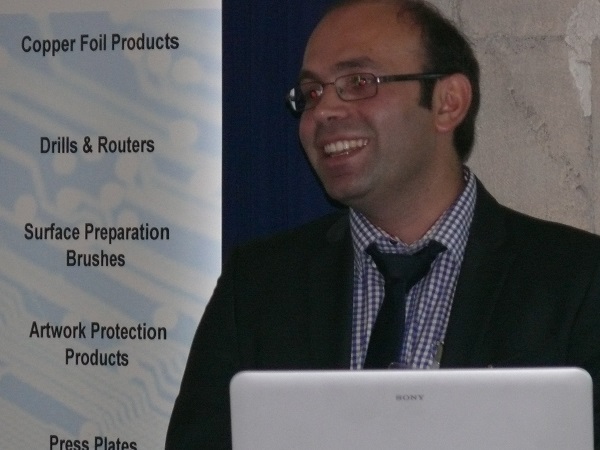
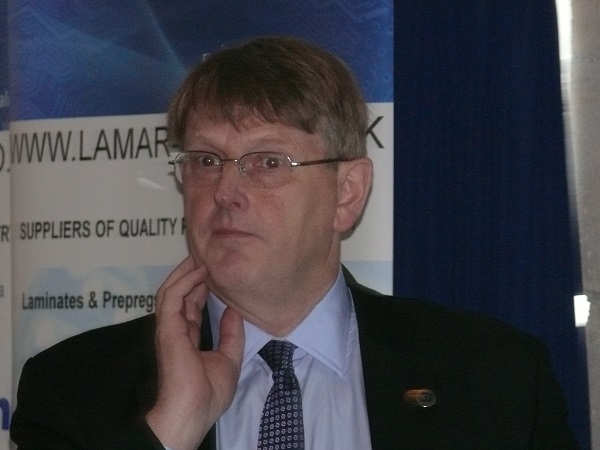 ICT Chairman Professor Martin Goosey was optimistic that the reporting of his presentation would be free from ironically amusing typographical errors, as he gave an update on the TSB-funded STOWURC project, entitled “Recovery of Copper from PCB Manufacturing Processes using Crab Shells”, describing the development of a sustainable process of using waste products from the seafood industry to recover metals from PCB manufacturing effluent. Chitin, a natural component of the shells of crustaceans, had the ability to adsorb heavy metals from dilute solution, and a simple chemical modification of chitin, by alkaline deacetylation to form chitosan, significantly improved the efficiency of adsorption. Professor Goosey summarised the results of initial experiments. The effects on adsorption rates of parameters such as temperature, pH, initial concentration, rate of mixing, specific metal ions had been studied, over a range of chitosan parameters including the amount of adsorbant, the degree of deacetylation and the particle size. It was possible to reduce copper concentration in effluent to the 0.1 ppm level. Having captured the metal, it was possible to desorb it with sulphuric acid and recover it by straightforward electroplating. A key issue was the residual adsorption efficiency of the chitosan after stripping of copper. There was a tendency for absorption ability to decrease with each cycle, and conditions were being optimised to minimise the effect. There were additional opportunities to optimise the chitosan adsorption process for metals other than copper in the general metal finishing industry, as well as recovering rare metals, including platinum, palladium, rhodium, osmium, iridium, mercury, and gold, from low concentration solutions.
ICT Chairman Professor Martin Goosey was optimistic that the reporting of his presentation would be free from ironically amusing typographical errors, as he gave an update on the TSB-funded STOWURC project, entitled “Recovery of Copper from PCB Manufacturing Processes using Crab Shells”, describing the development of a sustainable process of using waste products from the seafood industry to recover metals from PCB manufacturing effluent. Chitin, a natural component of the shells of crustaceans, had the ability to adsorb heavy metals from dilute solution, and a simple chemical modification of chitin, by alkaline deacetylation to form chitosan, significantly improved the efficiency of adsorption. Professor Goosey summarised the results of initial experiments. The effects on adsorption rates of parameters such as temperature, pH, initial concentration, rate of mixing, specific metal ions had been studied, over a range of chitosan parameters including the amount of adsorbant, the degree of deacetylation and the particle size. It was possible to reduce copper concentration in effluent to the 0.1 ppm level. Having captured the metal, it was possible to desorb it with sulphuric acid and recover it by straightforward electroplating. A key issue was the residual adsorption efficiency of the chitosan after stripping of copper. There was a tendency for absorption ability to decrease with each cycle, and conditions were being optimised to minimise the effect. There were additional opportunities to optimise the chitosan adsorption process for metals other than copper in the general metal finishing industry, as well as recovering rare metals, including platinum, palladium, rhodium, osmium, iridium, mercury, and gold, from low concentration solutions.
Specialist in chemical process applications of ultrasound, ICT Deputy Chairman Dr Andy Cobley reported progress on two collaborative projects: Susonence and Mesmoproc. Susonence was a three year multi-partner project aimed at 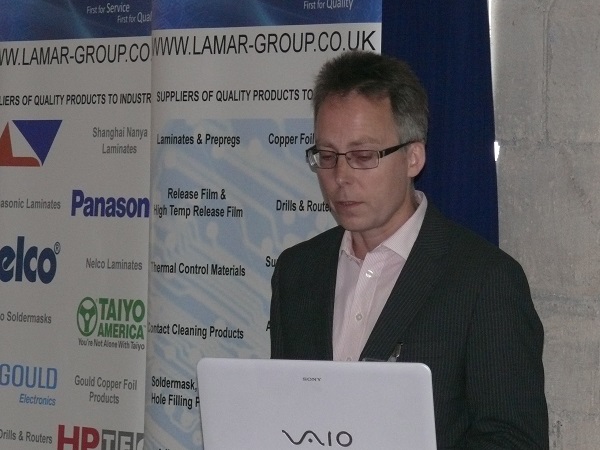 producing industrial scale ultrasonic equipment for sustainable surface modification in metal finishing and printed circuit manufacture. The objectives of the project were to reduce the use of toxic and hazardous chemicals, and at the same time to minimise waste and reduce energy and water consumption. Initially, two applications for ultrasonic technology in PCB manufacture had been identified: low temperature, reduced strength permanganate desmearing and persulphate etching, and extensive laboratory work had been carried out. Field trials in an ultrasonic pilot line at Merlin Circuit Technology had demonstrated that a 50% reduction in permanganate concentration, a 10 ºC drop in temperature and a 76% reduction in process time could be achieved, with freedom from interconnection defects and hole-wall pullaway. Pilot trials on persulphate etching were due to start second week in June 2014.
producing industrial scale ultrasonic equipment for sustainable surface modification in metal finishing and printed circuit manufacture. The objectives of the project were to reduce the use of toxic and hazardous chemicals, and at the same time to minimise waste and reduce energy and water consumption. Initially, two applications for ultrasonic technology in PCB manufacture had been identified: low temperature, reduced strength permanganate desmearing and persulphate etching, and extensive laboratory work had been carried out. Field trials in an ultrasonic pilot line at Merlin Circuit Technology had demonstrated that a 50% reduction in permanganate concentration, a 10 ºC drop in temperature and a 76% reduction in process time could be achieved, with freedom from interconnection defects and hole-wall pullaway. Pilot trials on persulphate etching were due to start second week in June 2014.
The objective of the Mesmoproc project was to develop innovative electrochemical processes for the maskless patterning of materials by combining electrochemical reactor engineering with ultrasound agitation to enable selective metallisation of microscale devices, components and printed circuit boards whilst eliminating repetitive conventional photolithography. A proprietary technology known as EnFace – Electrochemical Patterning by Flow and Chemistry – was characterised by a low metal concentration electrolyte and very small anode to cathode spacing, with the ‘mask’ placed on the anode, and advanced ultrasonic agitation. A laboratory-scale reactor had been constructed and was being used for optimisation of ultrasonic and electrochemical parameters and for the production of patterned samples.
Bill Wilkie has consistently demonstrated a remarkable talent for selecting memorable venues for Annual Symposia, of recent years on themes of transportation. This year’s choice, the Great Western Railway Museum of Steam, was extremely popular. The museum is housed in a restored building that was part of the old Swindon Works of the Great Western Railway, which operated from 1843 to 1986 and in its heyday could turn out three locomotives per week. Delegates made the most of the opportunity to check out the exhibits before heading home.
Pete Starkey, June 2014
